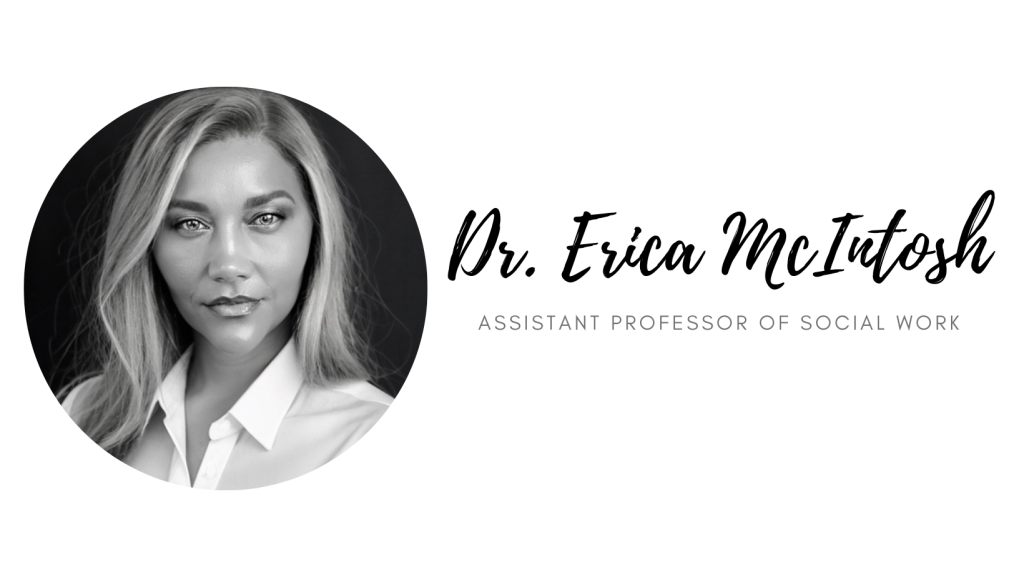Lift Every Voice: Exploring Black College Student Mental Health In Academia
African American History or Black History is American History as evidenced by the advances in science, sports, art, culture, and the adversities Black people continue to overcome. This statement does not come without contest, as seen with the influx of legislation from both sides of the divide, with one side hotly contesting Black history education and the other seeking legislation that would recognize the significance of ensuring that Black history integration into education (Black History is American History Act, 2023). Yet, even as I write this blog, I begin to think of the implications in higher education for Black College students entering college this upcoming fall and all that goes into it. For this blog, African American and Black are used interchangeably.

Black History Month intends to celebrate and acknowledge the contributions of African Americans in shaping our nation. Perhaps without this month, this conversation would not exist. Even as we celebrate, one would be remiss in not acknowledging the emotional well-being struggles that Black students encounter when pursuing higher education. Structural racism, finances, and the internalized pressure to excel in academic performance impact Black students’ outcomes and graduation rates, thus having more significant societal implications for life satisfaction trajectory (Thyden et al., 2023; Rice, 2021; Helling & Chandler, 2021). According to the National Center for Education Statistics (2023), there are significant gaps in postsecondary degree attainment, with 36% of Black students graduating in comparison to 56% of white students.

I am acutely aware of the current impact of black student health and wellness, not only as an educator and professional but as a parent, for my youngest child will join the fray this fall. For the past few weeks, my family has come home to find ubiquitous boxes and large envelopes from various universities posted to my high school senior daughter. Even before opening them, the boxes and packages proclaimed her acceptance to the colleges/universities of her choice. She was/is excited to receive the offers and scholarships (a leap of joy for mom and dad) but also bittersweet as she made her final decision. One of the determining factors for her final choice was proximity to home and the support on campus, as she indicated that she prioritized her mental health. She recalled a recent conversation with her friends (also young Black college students) who graduated the year prior, identifying struggling with stress, anxiety, and depression while on campus.

It turns out the conversations between her peers were accurate. A recent Centers for Disease Control and Prevention Morbidity and Mortality Weekly Report (2023) indicated, “Suicide rates among persons aged 10–24 years increased significantly during 2018–2021 among Black persons (from 8.2 to 11.2; a 36.6% increase)…amongst those aged 25–44 years (22.9%)”, which” is the most significant increase in suicide by racial group after a reported decline from in the preceding two years. This surge in Black youth suicide was the impetus for the Johns Hopkins Center for Gun Violence Solutions (2023) Call to Action for Black Youth Suicide Preventionreport, which highlighted the impact of a post-Covid era on Black youth mental health exacerbated by discrimination, bias, limited safe spaces, financial problems, stigma, and social isolation that further increase suicide risk. The African American community has strong feelings of distrust related to physical and mental health providers due to numerous instances of over/underdiagnosis, medical apartheid, and exploitation. Several examples of medical malfeasance include Dr. Marion J Sims, also known as the Father of Gynecology, experimenting on enslaved Black women to the Tuskegee Syphilis experiments, Cincinnati Radiation Experiments, Ferguson v. City of Charleston for involuntary testing and targeting of pregnant Black women and the mistreatment of Henrietta Lacks, to bias and discrimination in current medical to name a few (Gamble, 2016; Martin & Johnson, 2023; Krill Williston et. al, 2019). Another barrier was the stigma of seeking care due to previous perceptions that admitting depression was a weakness. Still, this trend is transitioning positively with increased mental health providers’ engagement within the Black Church, social support, emotional support, and connectivity with individuals, family, community, and social institutions, and with religiosity identified as a protective factor within the Black community (Fanegan et al., 2022; Wang et al., 2013; Avent Harris & Wong, 2018; Suicide Prevention Resource Center & Rodgers, 2020).

To promote meaningful support, faculty must adopt holistic strategies and solutions to support Black students who are struggling with mental health concerns. Given that research has suggested that spirituality is a critical component in the improvement of mental health, Christian faculty are in a unique position to encourage students to lean into having an open dialogue about seeking available mental health support when they are distressed. The integration of a biblical perspective focuses on love and how our relationships (e.g., with GOD, one another, and the environment) can help us remain connected when we feel isolated. With faculty as the primary point of contact in most instances within universities, we must recognize the signs of distress and create open pathways to encourage professional support if needed. An example of distress would be missing class frequently when this was not originally a problem, inattentiveness in class, and change in mannerisms, to name a few. Another strategy is to adapt support for struggling students and be person-centered, as no student challenges are identical. That said, support should not be “one size fits all.” Finally, promoting the atmosphere of connectivity by increasing social support such as peer mentorship, clubs, and activities can improve overall feelings of isolation.

Let’s have Black History Month also serve as a way for educators to be good stewards to Black college students.

Dr. Erica McIntosh is a licensed clinical social work supervisor, Disabled US Air Force veteran, private practice owner, and assistant professor in the Department of Social Work with a focus on research, practice, and the promotion of mental and physical health equity. Dr. McIntosh has extensive experience training healthcare professionals and speaking at conferences with organizations (hospital, community-based care, county social services events, and VA healthcare system settings) about substance use disorders, dual diagnosis, veteran health, cultural humility, and maternal health. Dr. McIntosh formerly led the VA Loma Linda Riverside County team for HUD/VASH, a federal veteran homeless program, where she coordinated a social work team, employment coordinator, peer specialists and housing navigators in addition to collaborating support with community stakeholders and the Riverside County HUD program. Dr. McIntosh’s is the executive director of Unapologetic Therapy and Consulting, which specializes in individual therapy focusing on mood and trauma related disorders with an intersectional lens, substance use disorders, and consultation. Dr. McIntosh is also a past Vice commander of AMVETS post 77. Dr. McIntosh currently has an article in review and has authored two chapters in a healthcare textbook pending publishing spring 2024. Dr. McIntosh’s current research areas include the NAEBOR Clinic with Mommy and Me that focuses on Black Maternal Health in Rialto, CA , substance use disorders, health equity, cultural trauma, and veteran mental health.
References
Avent Harris, J. R., & Wong, C. D. (2018). African American college students, the Black
Church, and counseling. Journal of College Counseling, 21(1), 15–28. https://doi.org/10.1002/jocc.12084
Black History is American History Act. HR 1394, 117th Cong. (2023).
https://www.congress.gov/bill/117th-congress/house-bill/1394/text?r=17&s=1
Fanegan, B., Berry, A. M., Combs, J., Osborn, A., Decker, R., Hemphill, R., & Barzman,
D. (2022). Systematic review of religiosity’s relationship with suicidality, suicide related stigma, and formal mental health service utilization among Black Americans. Psychiatric quarterly, 93(3), 775-782. https://link.springer.com/article/10.1007/s11126-022-09985-4
Gamble, V. N. (2016). Under the shadow of Tuskegee: African Americans and health
care. Health Psychology, 434-441.
Helling, J., & Chandler, G. E. (2021). Meeting the psychological health & growth needs
Of Black college students: Culture, resonance, and resilience. Journal of college
student psychotherapy, 35(2), 152-180.
John Hopkins Center for Gun Violence Solutions and John Hopkins Bloomberg School
of Public Health, Department of Mental Health. (2023). Still ringing the alarm:
An enduring call to action for Black youth suicide prevention.
https://publichealth.jhu.edu/sites/default/files/2023-08/2023-august-still-ringing-alarm.pdf
Krill Williston, S., Martinez, J. H., & Abdullah, T. (2019). Mental health stigma among
people of color: An examination of the impact of racial discrimination.
International journal of social psychiatry, 65(6), 458-467.
Martin, K. J., & Johnson, K. L. (2023). You can’t dismantle what you don’t recognize:
The effect of learning critical Black history in healthcare on perspective-taking.
Journal of experimental psychology: General. Advance online publication.
https://doi.org/10.1037/xge0001482
Meza, J. I., Patel, K., & Bath, E. (2022). Black youth suicide crisis: prevalence rates,
review of risk and protective factors, and current evidence-based practices.
Focus, 20(2), 197-203.
National Center for Education Statistics. (2023). Educational attainment of young
adults. Condition of education. U.S. Department of Education, Institute of Education Sciences. https://nces.ed.gov/programs/coe/indicator/caa.
Rice, R. (2021). Mental Health and Well-Being of College Students of Color.
Stone, D. M., Mack, K. A., & Qualters, J. (2023). Notes from the field: Recent changes
in suicide rates, by race and ethnicity and age group—United States, 2021. Morbidity and mortality weekly report, 72(6), 160. http://dx.doi.org/10.15585/mmwr.mm7206a4
Suicide Prevention Resource Center and Rodgers (2020). Risk and protective factors:
Black populations. Newton, MA: Education Development Center, Inc. https://sprc.org/wp-content/uploads/2023/01/Risk-and-Protective-Factors-Black_0.pdf
Thyden, N. H., McGuire, C., Slaughter-Acey, J., Widome, R., Warren, J. R., & Osypuk,
T. L. (2023). Estimating the Long-Term Causal Effects of Attending Historically Black Colleges or Universities on Depressive Symptoms. American journal of epidemiology, 192(3), 356–366. https://doi.org/10.1093/aje/kwac199
Wang, M. C., Lightsey, O. R., Jr, Tran, K. K., & Bonaparte, T. S. (2013). Examining suicide protective factors among black college students. Death studies, 37(3), 228–247. https://doi.org/10.1080/07481187.2011.623215
2 Comments
Great post Dr. Mcintosh, more insight on African American students’ mental health is needed. I appreciate your studies, and work.
Thank you for sharing, Paige!